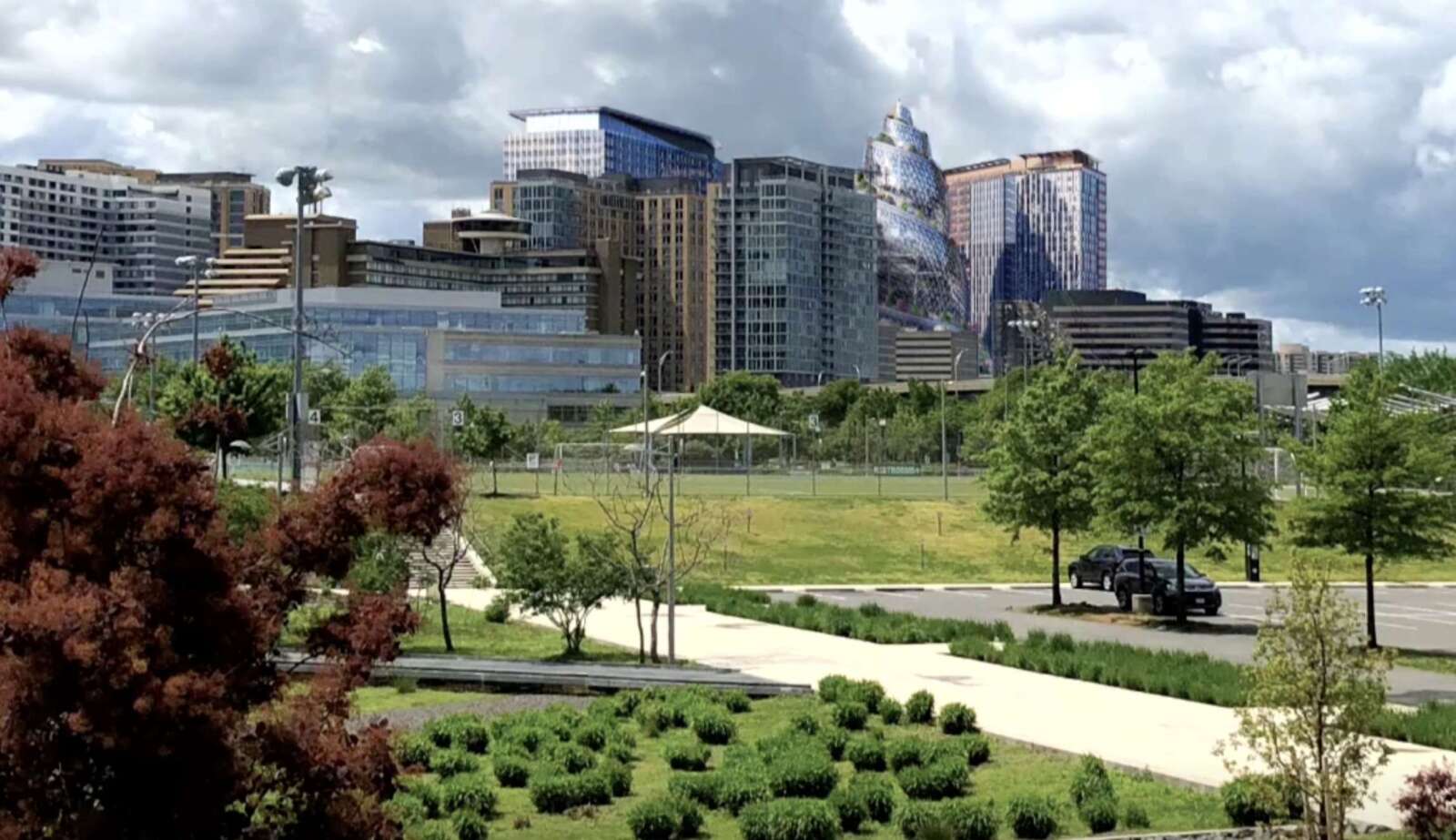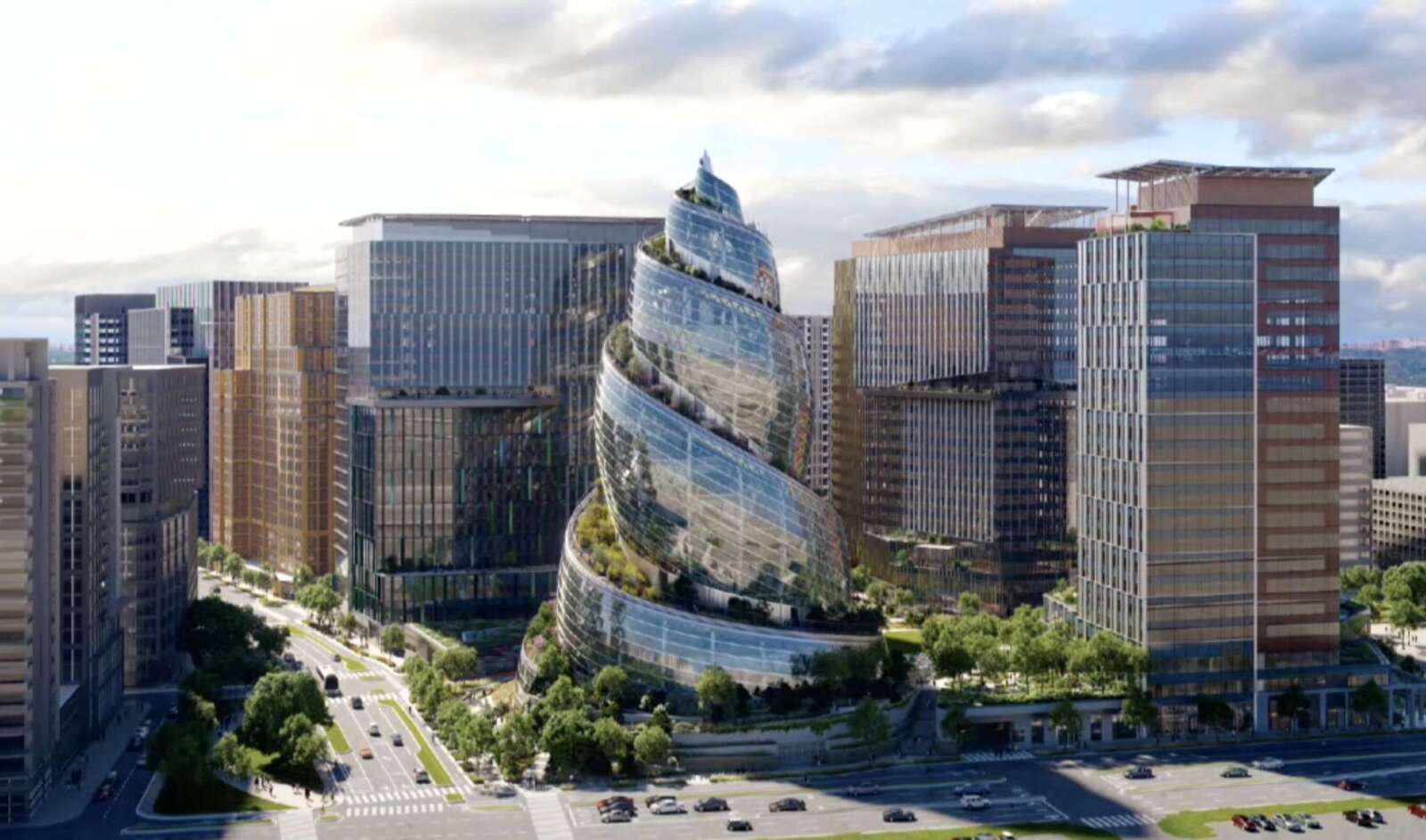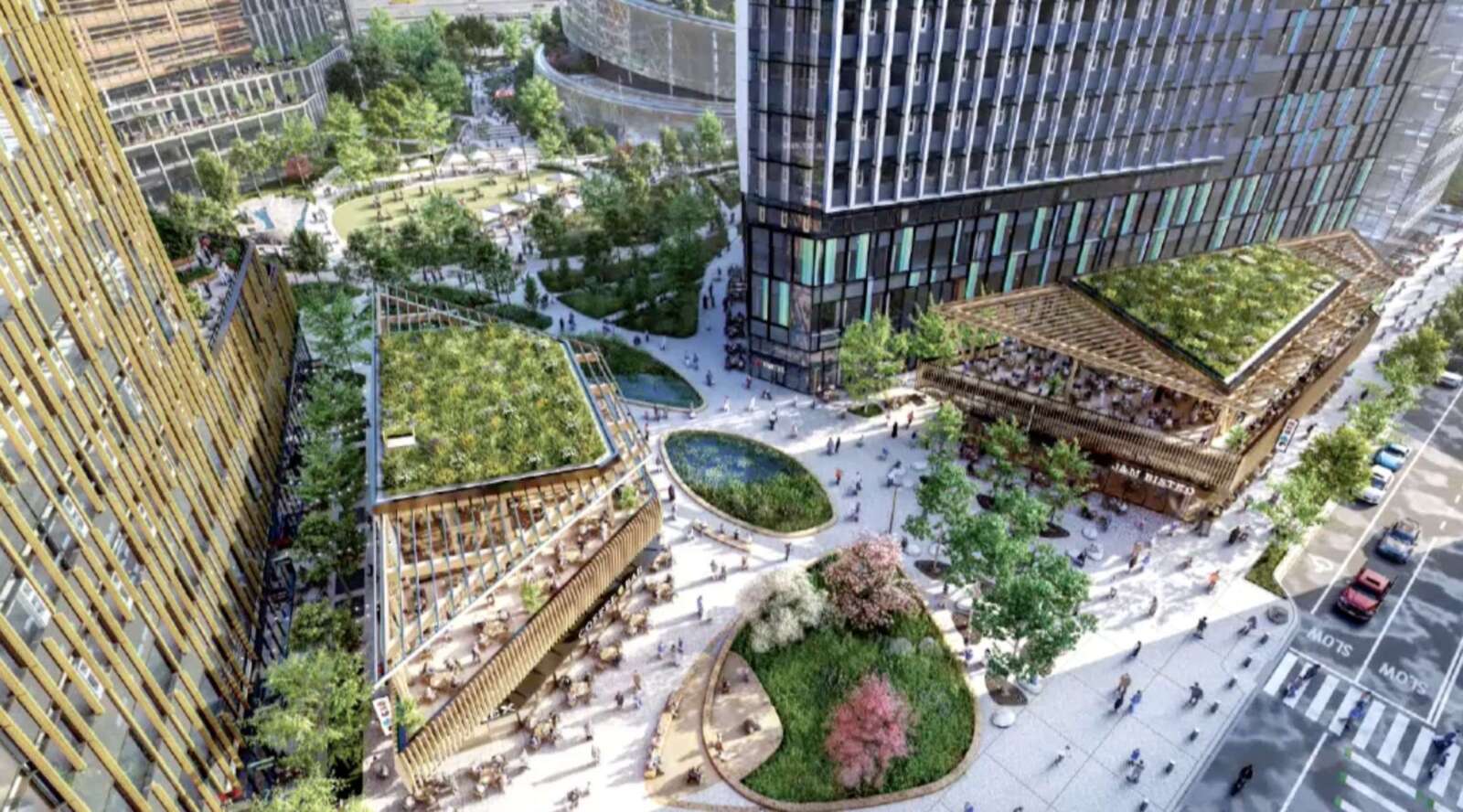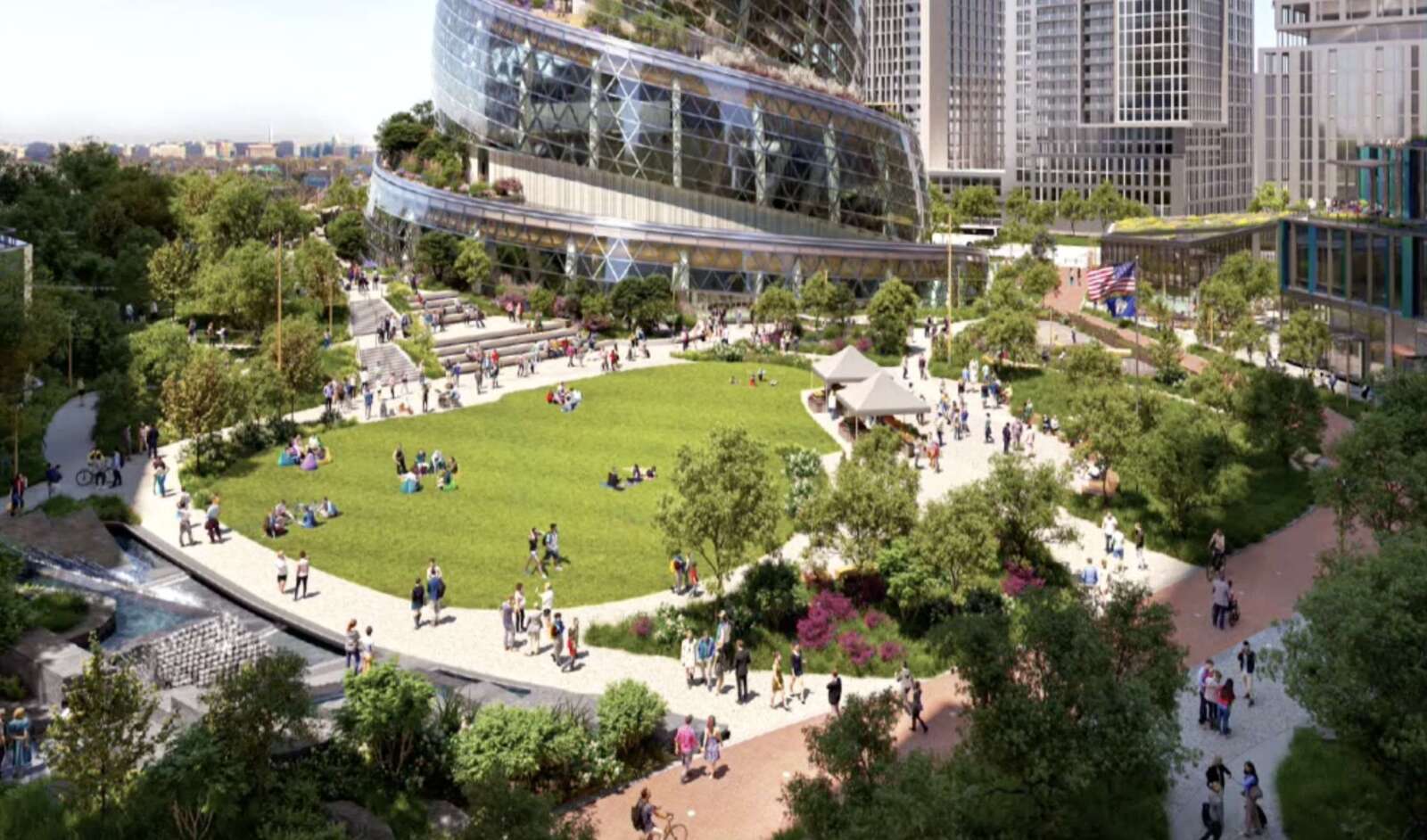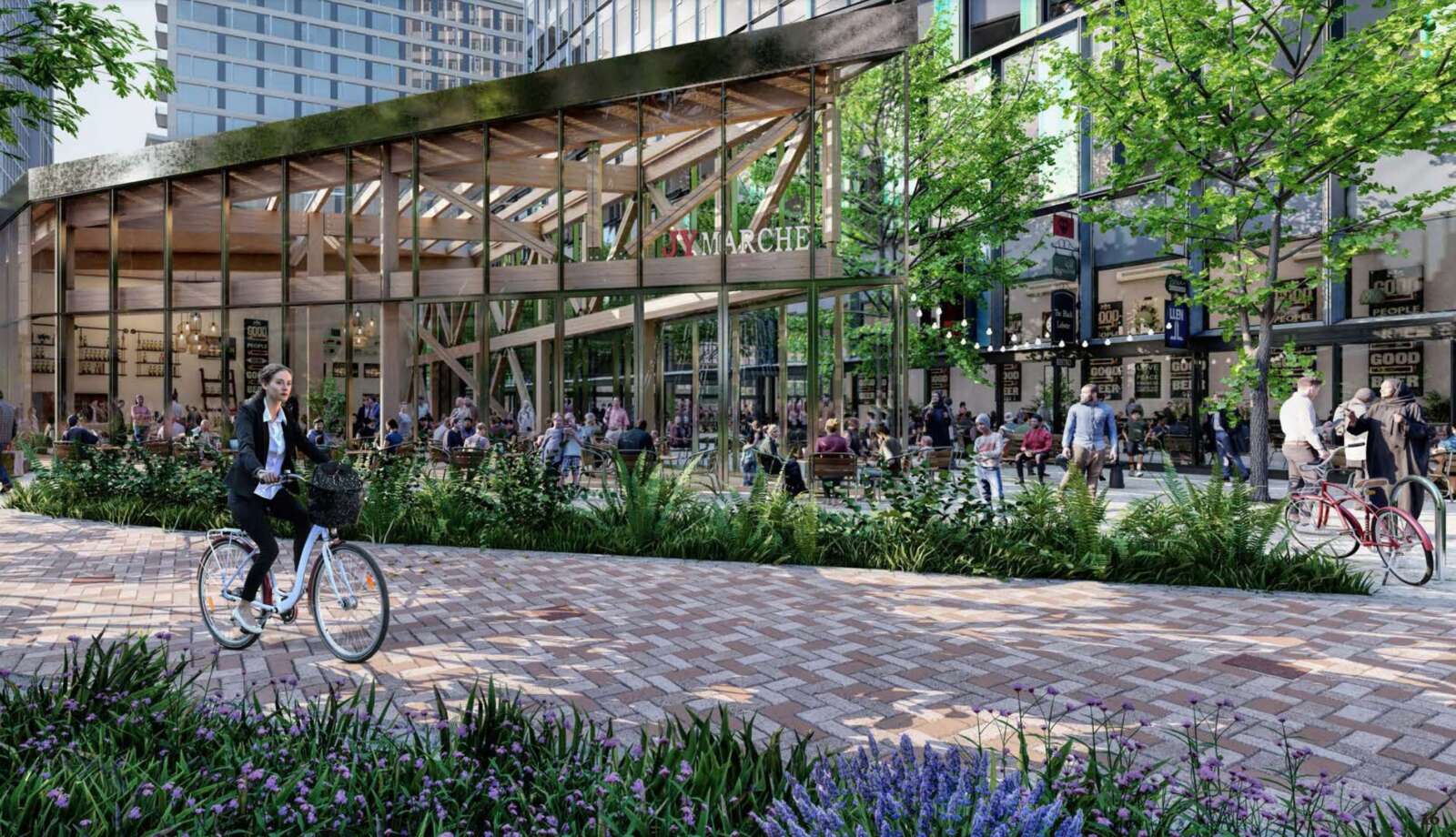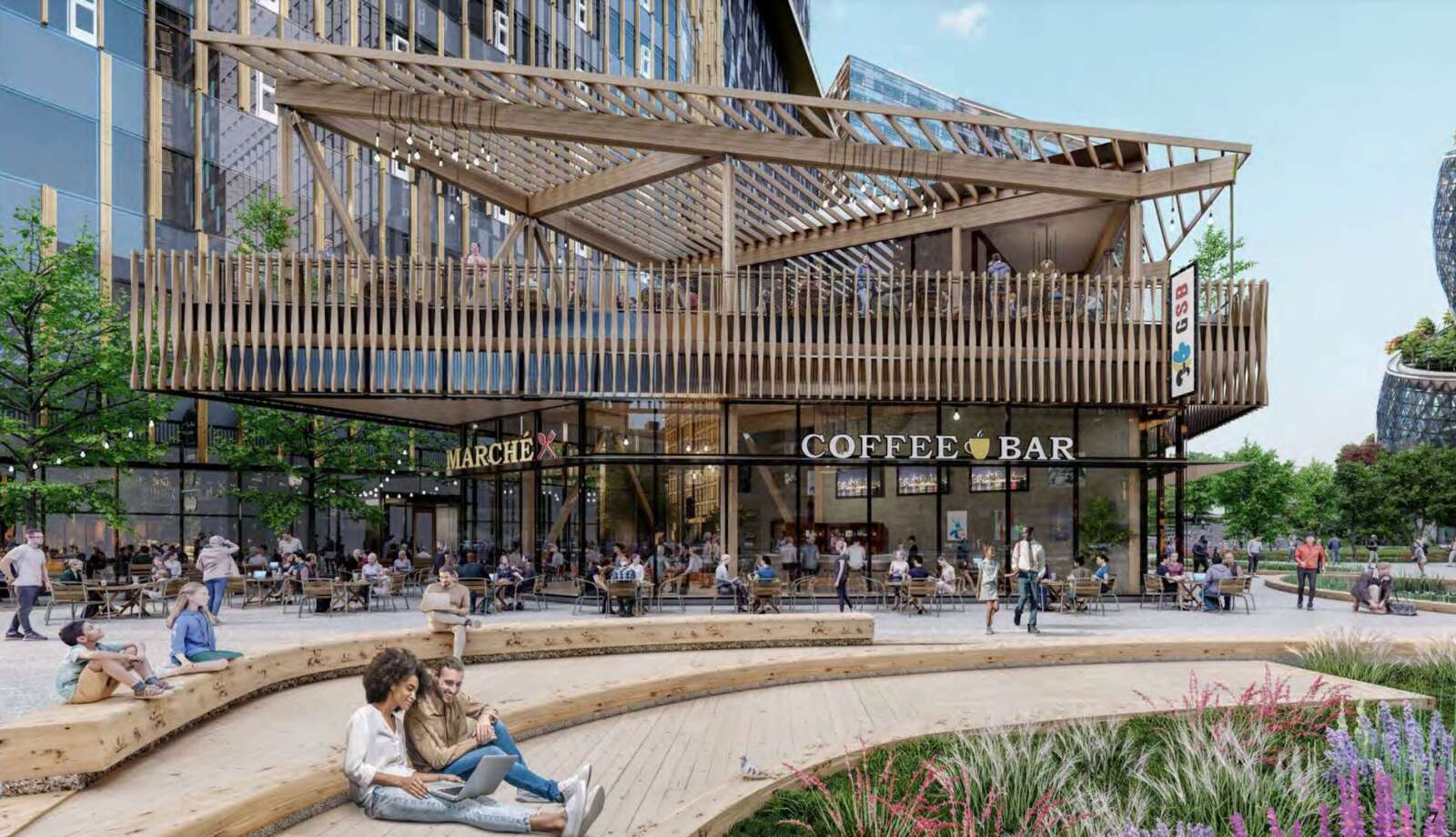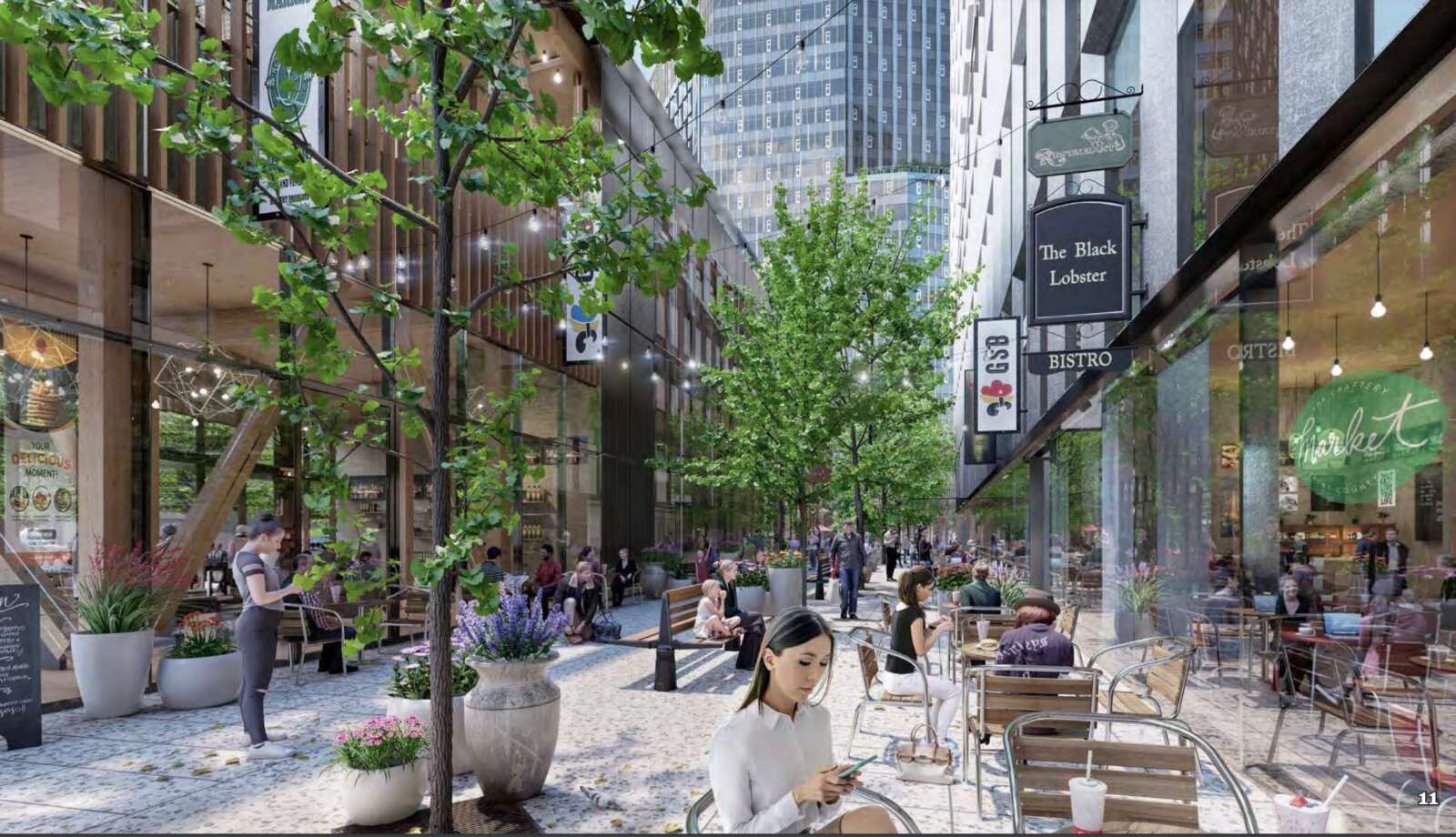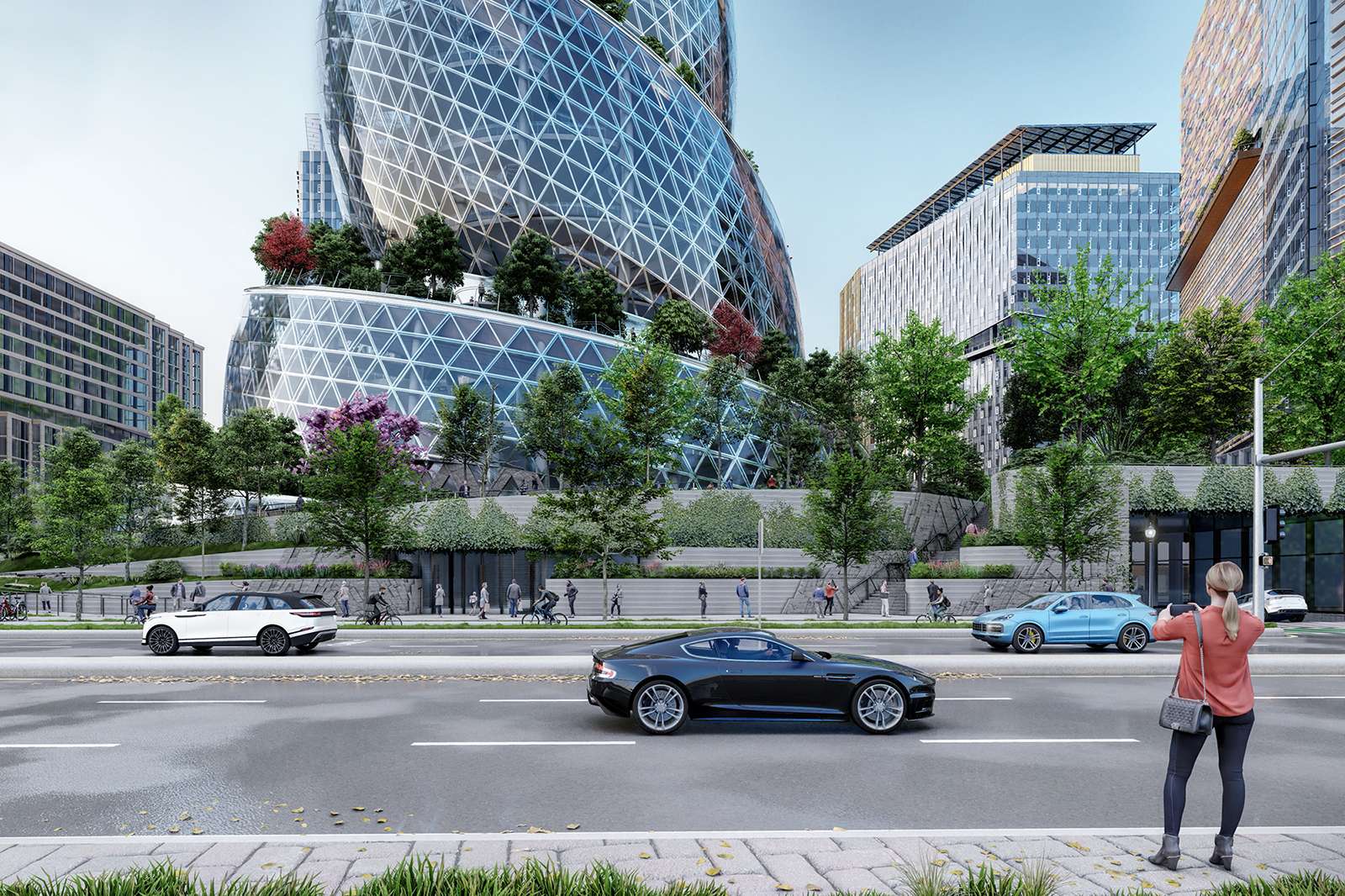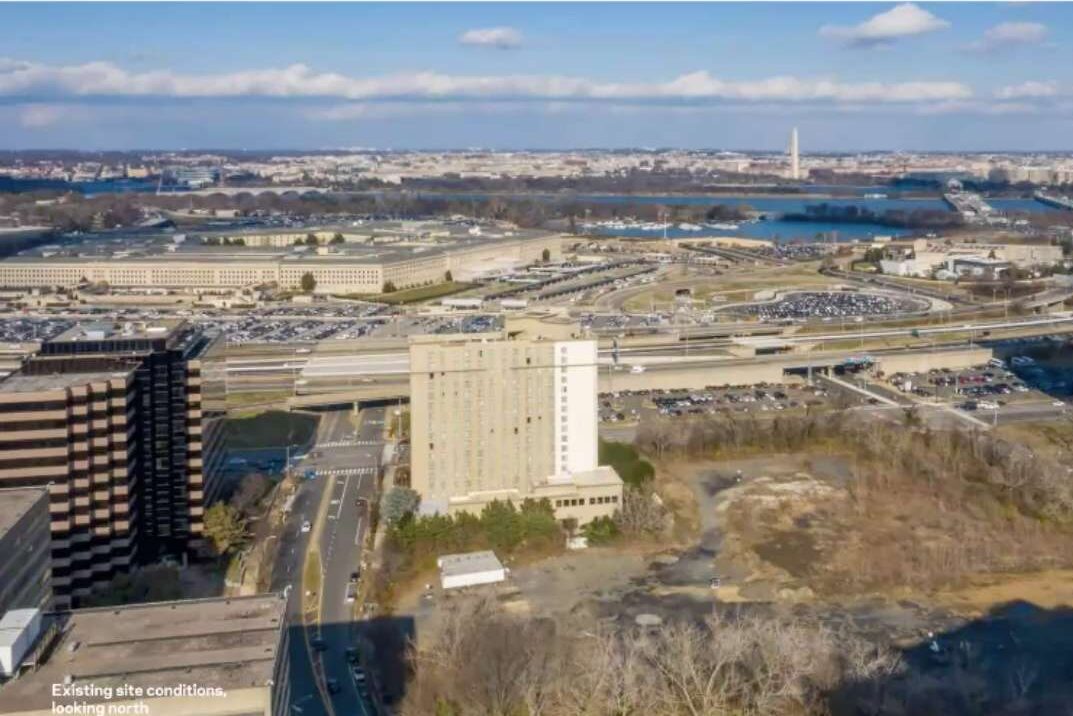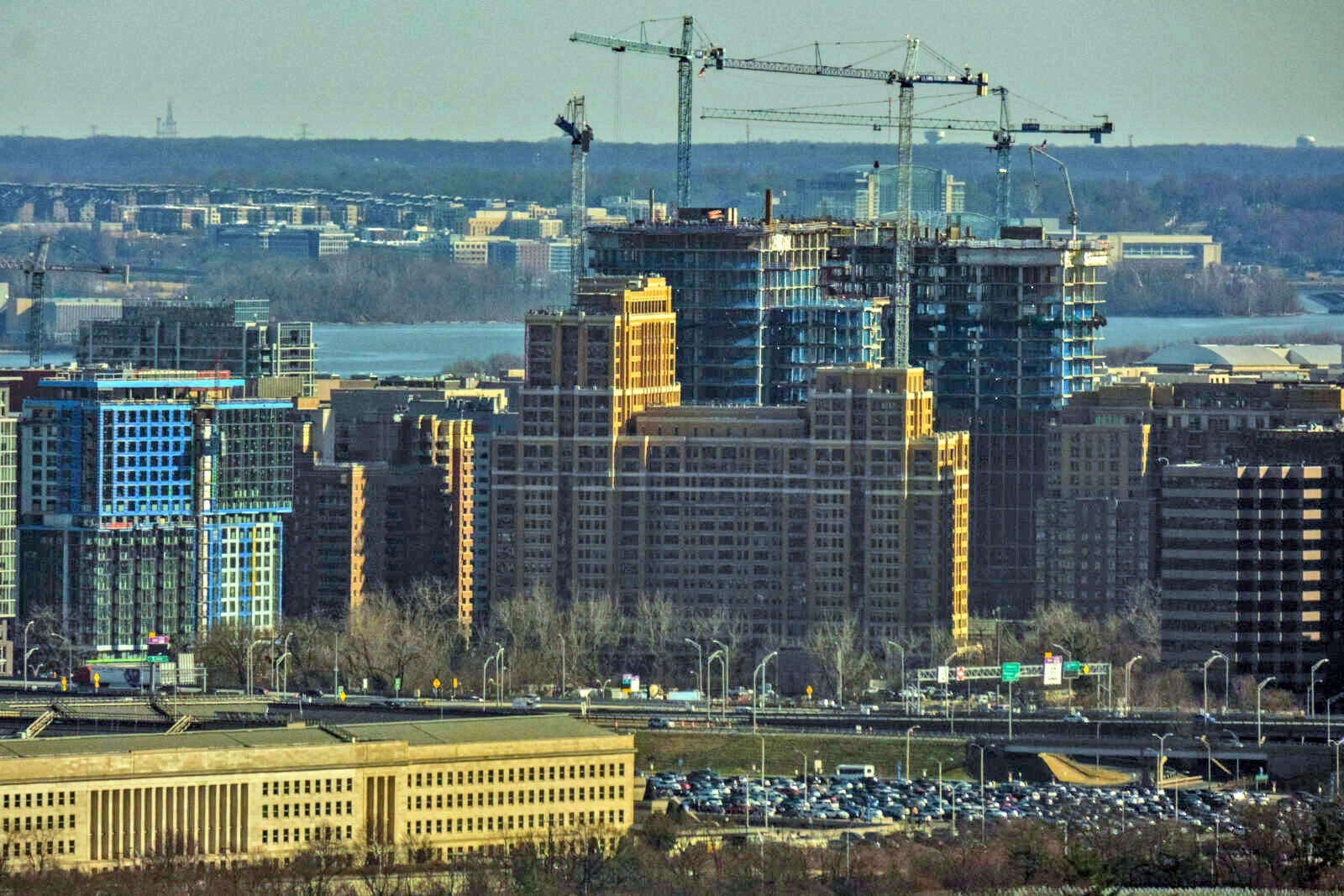Phase 2 of Amazon’s HQ2, including the signature “Helix” building, is a go.
The County Board unanimously approved the plans on the long-vacant PenPlace site in Pentagon City at its meeting on Saturday.
The plans incorporate 3.2 million square feet of office space and about 94,500 square feet of retail on what County Planner Peter Schulz described as the last undeveloped site in Pentagon City.
Amazon plans to build three, 22-story office buildings, three retail pavilions, and its spiral-shaped office building The Helix, on a block bounded by S. Eads Street, 12th Street S., Army Navy Drive and S. Fern Street. The site will also accommodate 2.75 acres of public park, a permanent home for Arlington Community High School, a childcare center and a multi-level underground garage.
The tech giant earned about 1.7 million square feet in bonus density for commitments to sustainable design — among them, powering the buildings with on-site solar panels and electricity from solar farms elsewhere in Virginia — a $30 million affordable housing contribution, public open space and maintenance, off-site transportation improvements and other additions like the school.
Almost two dozen people commented on the plan during the County Board meeting, mostly in support of PenPlace and Amazon’s work with the community during the review process. But a handful had concerns, some questioning whether, given the high density approved, the company should provide more to Arlington.
Community group Arlingtonians for Our Sustainable Future called on the County Board to secure additional benefits, requesting Amazon also fund an elementary school and at least one additional environmental equity and transportation benefit. ASF advocates for measured development in Arlington.
But Board Vice Chair Christian Dorsey rejected how the group calculated numbers it published that assigned values to benefits and to density. He said ASF also didn’t account for macroeconomic benefits, a greater return on the affordable housing investment and other considerations.
“This is a complex conversation. We don’t expect that everyone would fully get and absorb this, that’s why I am happy to engage with people on it,” he said. “But it also kind of underscores why we don’t have these conversations fully in the public.”
Anne Bodine, who was representing ASF, said the county should share the value of density and its calculations.
“Please don’t tell us that you know its value and we can’t,” she said during public comment.
Feedback over the last year of community engagement on the project changed aspects of the development, including adding more green space and other features such as a “green ribbon,” which is a biophilic walking path.
Over the engagement period, the planned size of some buildings shrunk, allowing more space for the public park and increasing the tree canopy.
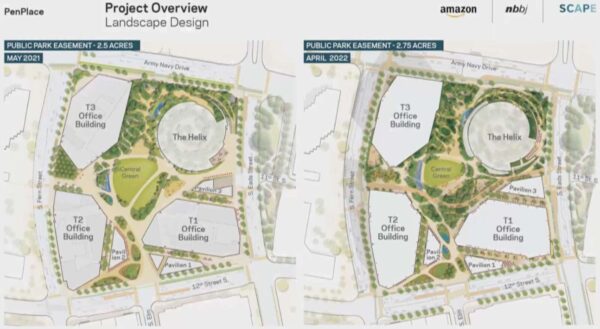
Board Chair Katie Cristol applauded the project’s consideration that put the public space “front and center” rather than it being an afterthought just using what’s left over after buildings were accounted for.
Board Member Takis Karantonis said he would have liked the green ribbon to be less linear, and to get a protected bike lane on 12th Street, although he recognized technical constraints.
“(The green ribbon) is a little bit more multimodal than I would like, I would like more promenade, more pedestrian space that is interrupted by more green space, much like the New York High Line is designed, but I can live with this,” he said.
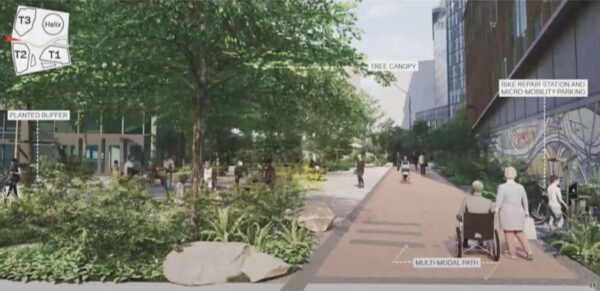
The Crystal City Civic Association President Eric Castle said the group is concerned about putting too much transportation emphasis on 12th Street and “it becoming overloaded and becoming a problem in the future.”
Planning Commission Chair Daniel Weir said the street became a “make or break block for a transit network that has to bring people together quickly and efficiently between the Pentagon City station and the Bus Rapid Transit connector.”
“It ultimately was a matter of balancing the interests,” he said.
Several Board members noted that the collaboration between Amazon and the county throughout the process should be a model, as should the innovation in the design of the project, for development moving forward.
“You have set a new standard for the value that architects and designers bring to the public process and the public realm,” Karantonis said. “You delivered a project that marks a final departure, I should say, from the gray and beige and uninspiring repository of federal bureaucracy that we were used to in this corner of Arlington for more than half a century and we will hopefully see as almost obsolete today.”
Amazon, which is currently leasing office space in Crystal City, is building its HQ2 in two phases. The first phase, Metropolitan Park, is at the corner of 13th Street. S and S. Eads Street. With both phases of the project built out, HQ2 is expected to eventually host 25,000 Amazon employees.
Construction on Met Park, comprised of two 22-story buildings and 2.5-acre open space, is underway and should be completed in 2023.


